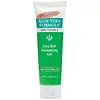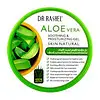Palmer's Aloe Vera Formula Extra Rich Moisturizing Gel Versus Dr. Rashel Beauty Elixirs Aloe Vera Soothing & Moisturizing Gel
What's inside
What's inside
 Key Ingredients
Key Ingredients

No key ingredients
 Benefits
Benefits

 Concerns
Concerns

 Ingredients Side-by-side
Ingredients Side-by-side

Aloe Barbadensis Leaf Juice
Skin ConditioningGlyceryl Polymethacrylate
Propylene Glycol
HumectantHamamelis Virginiana Water
AstringentAlgae Extract
EmollientPPG-2-Isodeceth-12
EmulsifyingCarbomer
Emulsion StabilisingTocopheryl Acetate
AntioxidantTriethanolamine
BufferingMethyl Gluceth-20
HumectantDMDM Hydantoin
PreservativeTetrasodium EDTA
Quaternium-15
PreservativeParfum
MaskingHexyl Cinnamal
PerfumingLinalool
PerfumingGeraniol
PerfumingLimonene
PerfumingCI 19140
Cosmetic ColorantCI 42090
Cosmetic ColorantAloe Barbadensis Leaf Juice, Glyceryl Polymethacrylate, Propylene Glycol, Hamamelis Virginiana Water, Algae Extract, PPG-2-Isodeceth-12, Carbomer, Tocopheryl Acetate, Triethanolamine, Methyl Gluceth-20, DMDM Hydantoin, Tetrasodium EDTA, Quaternium-15, Parfum, Hexyl Cinnamal, Linalool, Geraniol, Limonene, CI 19140, CI 42090
Water
Skin ConditioningGlycerin
HumectantCarbomer
Emulsion StabilisingTriethanolamine
BufferingCaprylhydroxamic Acid
Phenoxyethanol
PreservativeEthylhexylglycerin
Skin ConditioningPropylene Glycol
HumectantMethylparaben
PreservativeDisodium EDTA
Aloe Barbadensis Extract
Skin ConditioningMica
Cosmetic ColorantPEG-40 Hydrogenated Castor Oil
EmulsifyingCI 19140
Cosmetic ColorantCI 42090
Cosmetic ColorantParfum
MaskingIngredients Explained
These ingredients are found in both products.
Ingredients higher up in an ingredient list are typically present in a larger amount.
Carbomer is a polymer of acrylic acid. Its main role is to create a gel consistency.
A high amount of carbomer can cause pilling or balling up of products. Don't worry, most products contain 1% or less of carbomer.
CI 19140 is also known as Tartrazine. Tartrazine is a synthetic dye used in cosmetics, foods, and medicine to add a yellow color.
Tartrazine is created from petroleum and is water-soluble.
Some people may experience allergies from this dye, especially asthmatics and those with an aspirin intolerance.
Learn more about CI 19140Ci 42090 is a synthetic dye created from petroleum. It is used to give a bright blue color to cosmetics, medicine, and food.
Parfum is a catch-all term for an ingredient or more that is used to give a scent to products.
Also called "fragrance", this ingredient can be a blend of hundreds of chemicals or plant oils. This means every product with "fragrance" or "parfum" in the ingredients list is a different mixture.
For instance, Habanolide is a proprietary trade name for a specific aroma chemical. When used as a fragrance ingredient in cosmetics, most aroma chemicals fall under the broad labeling category of “FRAGRANCE” or “PARFUM” according to EU and US regulations.
The term 'parfum' or 'fragrance' is not regulated in many countries. In many cases, it is up to the brand to define this term.
For instance, many brands choose to label themselves as "fragrance-free" because they are not using synthetic fragrances. However, their products may still contain ingredients such as essential oils that are considered a fragrance by INCI standards.
One example is Calendula flower extract. Calendula is an essential oil that still imparts a scent or 'fragrance'.
Depending on the blend, the ingredients in the mixture can cause allergies and sensitivities on the skin. Some ingredients that are known EU allergens include linalool and citronellol.
Parfum can also be used to mask or cover an unpleasant scent.
The bottom line is: not all fragrances/parfum/ingredients are created equally. If you are worried about fragrances, we recommend taking a closer look at an ingredient. And of course, we always recommend speaking with a professional.
Learn more about ParfumPropylene Glycol is an odorless, colorless liquid. As a humectant, it helps skin retain moisture. It also aids in delivering active ingredients.
Another role of this ingredient is preventing a product from melting or freezing. Propylene glycol also adds antimicrobrial properties to a product, elongating product lifespan.
This ingredient is considered an organic alcohol and commonly added into both cosmetics and foods.
Those with sensitive skin or conditions may develop a rash when using this ingredient.
Learn more about Propylene GlycolTriethanolamine is an emulsifier and pH adjuster. It is created using ethylene oxide and ammonia. This gives Triethanolamine a nitrogen core and a similar scent to ammonia.
As an emulsifier, it prevents ingredients from separating and enhances texture by adding volume to a product.
PH adjusters are common in cosmetic products. The pH of a product can affect the effectiveness of other ingredients. A product with a high pH may also irritate the skin.
Learn more about Triethanolamine